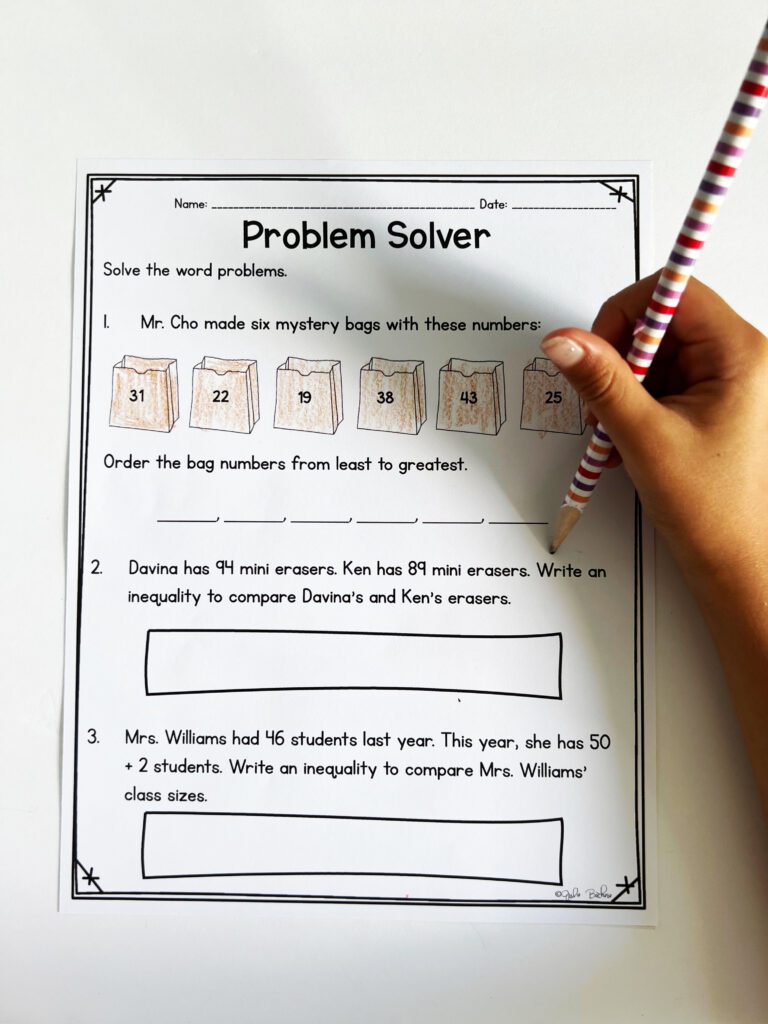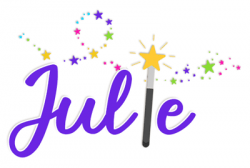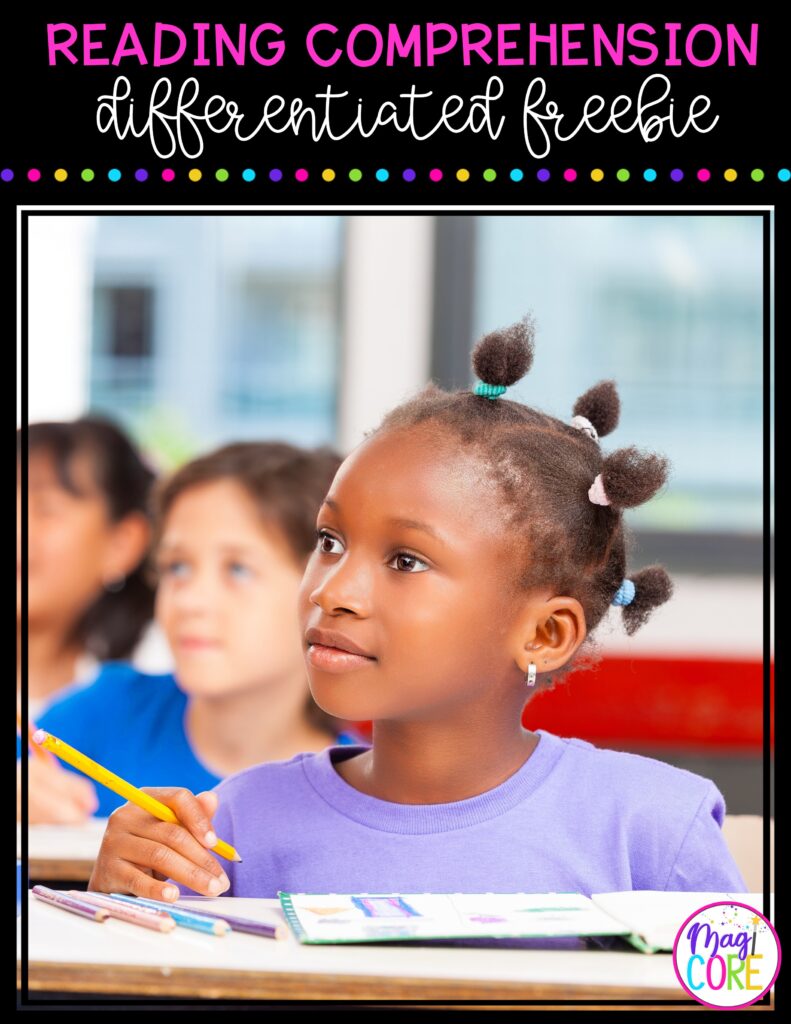Ok, you’ve made it over the hump of teaching basic place value, so now it’s time to build onto that skill. Number comparison (greater than and less than) is a skill that usually comes soon after teaching basic place value. And whether you were one of the teachers that loved teaching place value or one of the teachers that didn’t, we can all usually agree that comparing numbers and ordering them can be a pretty fun skill to teach. This is partly because there are endless options of real-life objects you can compare. You know I love my food in math class and this is another skill that is absolutely perfect for it. Yay for more food and fun! So now that we’ve talked about the fun we’re going to have, let’s talk about some ways and activities to teach the skill.
As teachers, we know how important vocabulary is, but it is truly an essential piece of this skill. Students must be able to determine which quantity is larger or smaller, which then leads into more vivid terms like “greater than” or “less than.” Not only will students have to know the meaning of each term, but they will have to use the terms to apply symbols later on.
The best way to start off teaching number comparison is to have students build the numbers they are comparing with manipulatives. This provides a clear visual on which number is larger or smaller in quantity. Once students build numbers, have them verbally or visually identify which one has more and which one has less.
I know that sometimes, the earlier you teach something, the more practice students can potentially get. However, with this skill, don’t skip right to using the symbols. Give students an opportunity to identify larger or smaller quantities by simply identifying them first. Make sure they are solidified in the terms before asking them to apply the terms to a symbol.

You could compare quantities of anything, which is what makes the options literally endless when teaching this skill. And how much fun can things get when there’s an endless realm of possibilities? Want to use candy? Sure! Small snacks like Cheez- Its or pretzels? Go for it! What about fun things like which cookie has more M&Ms or chocolate chips? Want to have a full-on lunch? Which pizza has a greater number of pepperoni? Bring some fun and food into this one for automatic engagement. *tip: if this falls during a holiday, use some holiday-themed manipulatives (plastic eyeballs for Halloween, etc.).
Sometimes in math, we forget how much reading we can incorporate into our lessons. Honestly, we could probably read math stories and read-alouds alongside most math skills that we teach. This is a great example of how impactful text and stories can be in math class. It really helps students understand what’s happening when you apply the skill within a story.
Once students can visually see which quantities are larger or smaller with manipulatives, then move to more abstract ideas. Number lines can be a touch more abstract than place value blocks or other manipulatives, but once students understand that the larger number appears further or furthest on the number line, it can become a useful tool. When using the number line, have students circle both numbers that they are comparing and determine which one is “further” on the number line.
Ok, now go have some fun and food! 🍬
You can check out my first grade unit for comparing numbers here. This unit aligns to CCSS 1.NBT.B.3.
Looking for more tips for building number sense? Check out this blog on How to Help Students Build Number Sense.

We strive to create resources that empower teachers and transform student success. We create skill-focused resources that promote critical thinking, enhance student engagement, and incorporate diversity. Our goal is to develop the tools teachers need to reach their students and foster a lifetime of learning.

